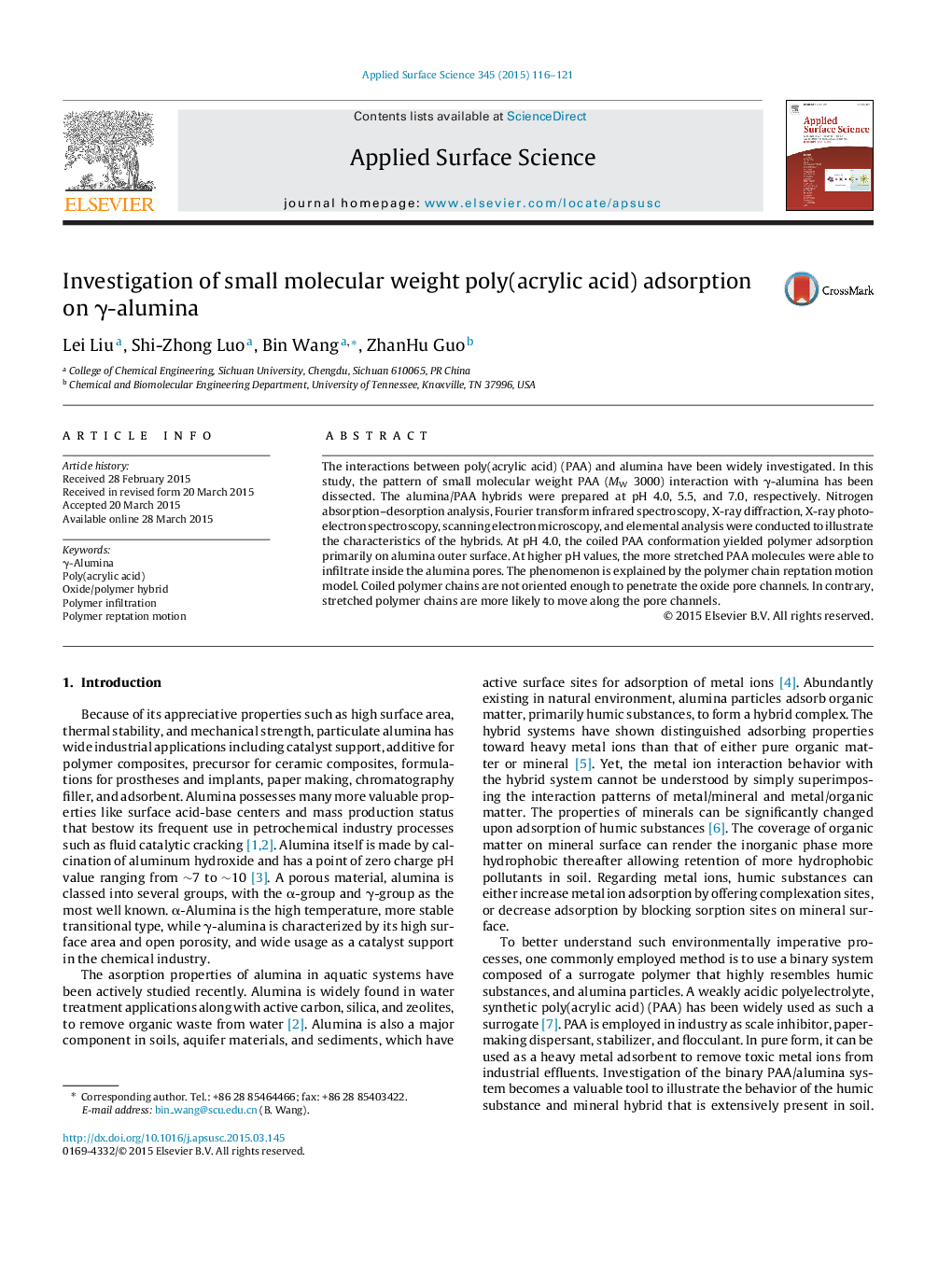| Article ID | Journal | Published Year | Pages | File Type |
|---|---|---|---|---|
| 5355138 | Applied Surface Science | 2015 | 6 Pages |
Abstract
The interactions between poly(acrylic acid) (PAA) and alumina have been widely investigated. In this study, the pattern of small molecular weight PAA (MW 3000) interaction with γ-alumina has been dissected. The alumina/PAA hybrids were prepared at pH 4.0, 5.5, and 7.0, respectively. Nitrogen absorption-desorption analysis, Fourier transform infrared spectroscopy, X-ray diffraction, X-ray photoelectron spectroscopy, scanning electron microscopy, and elemental analysis were conducted to illustrate the characteristics of the hybrids. At pH 4.0, the coiled PAA conformation yielded polymer adsorption primarily on alumina outer surface. At higher pH values, the more stretched PAA molecules were able to infiltrate inside the alumina pores. The phenomenon is explained by the polymer chain reptation motion model. Coiled polymer chains are not oriented enough to penetrate the oxide pore channels. In contrary, stretched polymer chains are more likely to move along the pore channels.
Related Topics
Physical Sciences and Engineering
Chemistry
Physical and Theoretical Chemistry
Authors
Lei Liu, Shi-Zhong Luo, Bin Wang, ZhanHu Guo,
